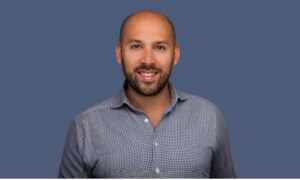The National Academy of Inventors’ (NAI) annual conference is scheduled for June 14-15 this summer, and the collective innovative energy converging on Phoenix, Arizona, during those two days is mind-boggling. For perspective, the NAI’s 4,000 members boast 44 Nobel Prizes and 63 US Medals of Science, Technology, and Innovation between them. They hold more than 53,000 patents, started over 13,000 licensed technologies and companies, and created 1 million jobs responsible for $3 trillion in revenue.
“Discussing how we can help young inventors tackle the globe’s greatest challenges, the future of patents, and the role of academic research in the inventing space are all on the agenda for this conference,” said Dr. Paul Sandberg, president and founder of the National Academy of Inventors (NAI).
Networking with the World’s Leaders in Innovation and Progress
Networking and brainstorming will take the old adage of “two heads are better than one” to exponential levels during this year’s NAI conference. The registration list alone reads like a who’s who among the influencers in science and technology. Though the complete list of attendees is still in the making, NAI participants are able to receive a preview of the prestigious presenters who will be speaking during this year’s discussions.
Notable participants in attendance and on this year’s panels include:
- George Smith, who received the Nobel Prize in Chemistry for developing what the award committee described as the technique to “harness the power of evolution.” The technique has been used to develop drugs to treat rheumatoid arthritis, malaria, and chronic bowel inflammation.
- Dr. Gary Michelson, a National Inventors Hall of Fame Inductee and philanthropist. His work includes non-invasive back surgery, which has revolutionized back surgeries for millions of people.
- Dr. Helena Wisniewski, a Professor of Entrepreneurship at the University of Alaska, Anchorage. She is a technological entrepreneur who has launched 12 startup companies covering a diverse swath of technology areas.
- Sylvia Thomas, PhD, an Interim Vice President for Research & Innovation at the University of South Florida. Her work in developing low-cost, low-power miniaturized electronic circuitry, advanced materials, nanostructures, and nanomaterials has contributed greatly to environmental and health systems. Outside the lab, her dedication to STEM education and diversity has made her a passionate mentor and educator.
Taking on Equity in the Inventing Space
These patent-holding inventors from academic institutions and nonprofit research organizations are meeting to mentor the next generation of inventors to create a better society for all. This year’s panel discussions center around promoting racial equity in the patent process. Two leading academics are slated to take on the topic of racial inequity in the United States Patent process.
Andrei Iancu, the former Director of the United States Patent and Trademark Office (USPTO) will support the current patent process to drive economic growth. Nobel Laureate George Smith, who has received a Nobel Prize for his instrumental work in chemistry, will argue that patents drive technological advancements for the wrong reasons and discourage inventors from underrepresented groups. The questions they will tackle do not have easy answers. What are the advantages and disadvantages of a patent system for technological advancement? Does the patent system discourage diversity? Should the patent system in the US be changed? What is the role of patents in a stakeholder economy?
As a division of the Department of Commerce, the USPTO grants patents according to Article I, Section 8 of the Constitution. Some point out that this power to, “promote the progress of science and useful arts, by securing for limited times to authors and inventors the exclusive right to their respective writings and discoveries,” has contributed to the systemic disenfranchisement of minorites in the fields of science and technology.
The NAI’s current Joint Agreement with the USPTO aims to correct the systemic and cultural challenges of the patent process in order to increase diversity and inclusion. Panel discussions that promise to offer direction for the coming year include:
- Sustaining a pipeline of diverse, fresh perspectives and opportunities for innovation emergence in diverse populations, especially women, veterans, and minorities.
- Innovating for future generations, best practices in education and mentorship, and the role of innovation in university culture
The two-day conference will conclude with the induction of this year’s class of Academy Fellows — the most diverse class in the organization’s history. For more information on attending this year’s event, readers can visit NAI’s website.



































